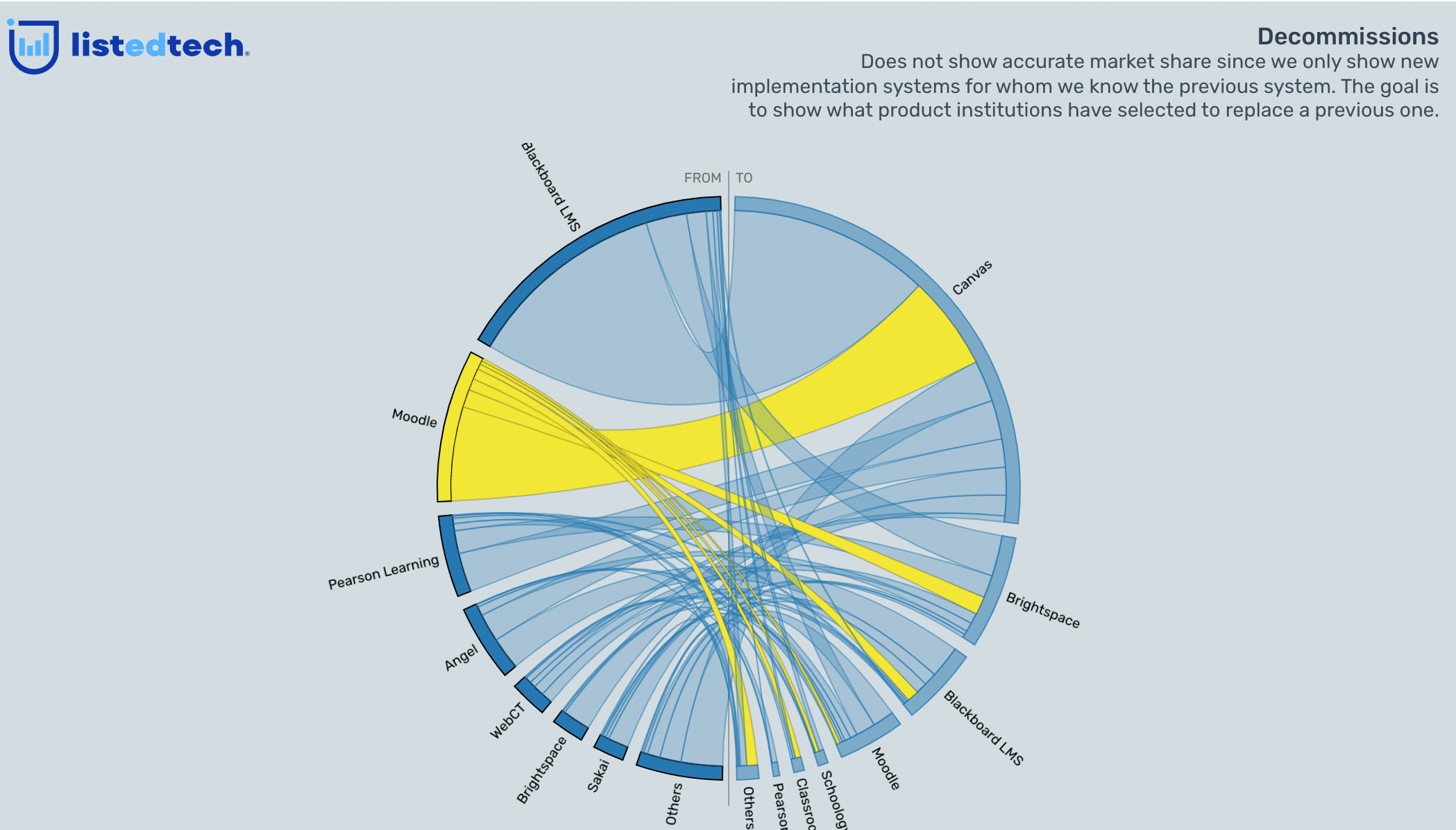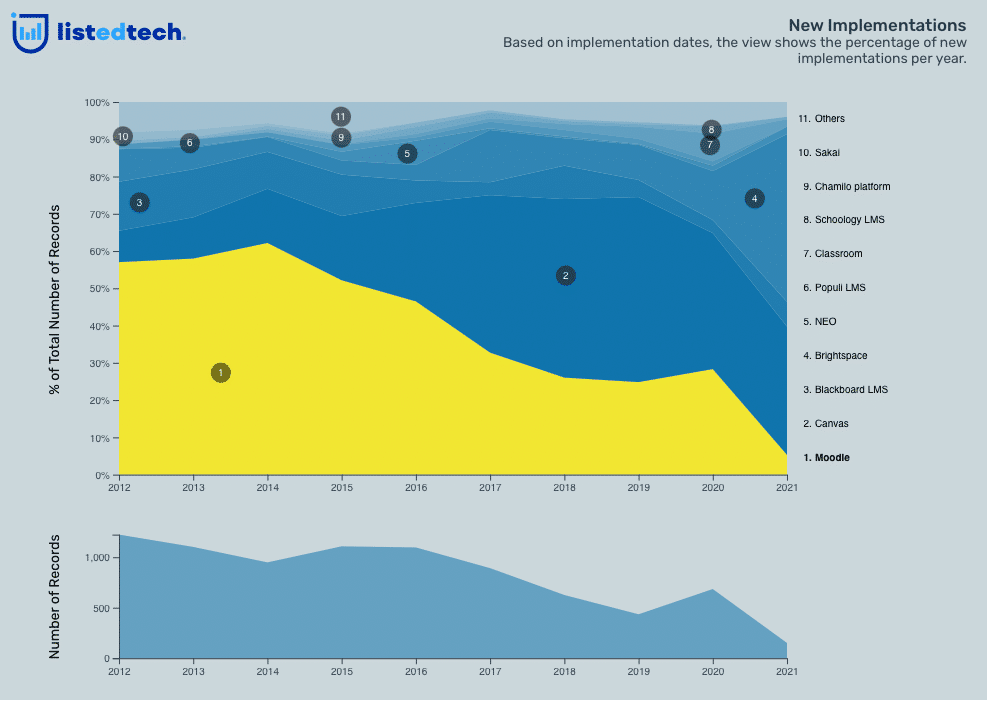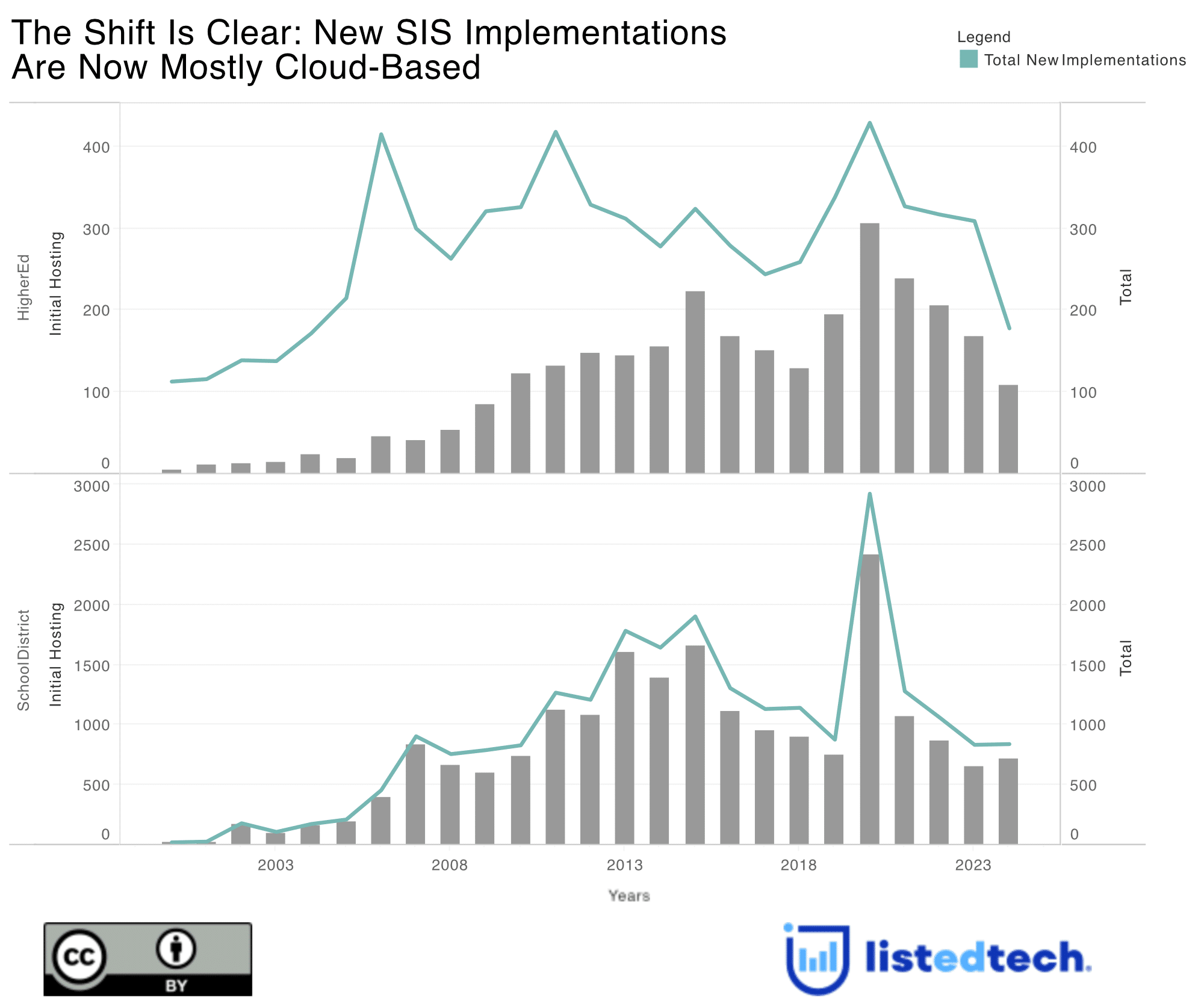
The learning management system product category is one where many companies fight hard to gain more market shares. Moodle set itself apart from the beginning by deciding to offer its LMS for free. In 2022, not many products remain open-source. What makes Moodle a different player?
The Long History of Moodle
Moodle is not only different because of its longevity (it’s been around for more than 20 years), it’s also the only LMS system developed in the country of the kangaroos. Its founder, Martin Dougiamas, studied at the School of the Air, an Australian correspondence school for kids living in the outback. This was his first contact with distance education.
Later in his life, he worked and studied at Curtin University where he used WebCT, a then-prolific virtual learning environment for students. He saw in WebCT’s limitations a business opportunity and decided to work on an alternative method of online teaching.
Even before the release of version 1.0, Moodle was already available for download through CVS (later changed to Git Repository). The official release came in August 2002. Because of its open-source format, the support from the community was impressive: users created forums and discussion boards, others translated the core application in dozens of languages while more adopters designed themes for this new solution.
A year later, the company split into two branches: moodle.org became the open-source community structure while moodle.com formed the commercial solution. Development iterations and many years passed. By 2007, it became the open-source LMS solution and dominated the whole LMS market.

In 2010, it passed the one-million users (only two years after it had reached 500,000 students). At this point, the learning management system was available in more than 100 languages. That same year, Moodle 2.0 was released, paving the way to regular updates by the Moodle team. In 2013, the development team adapted the solution to offer a customizable theme that can fit all screen sizes.
To support its LMS product, Moodle even launched a MOOC module called Learn Moodle. These open online courses were offered for the first time in 2013. The company decided to repeat the experience in 2015. Since then, it is proposed regularly to educators across the world to help them better understand the basics of the learning management system.
In 2015, Moodle also started to offer hosting capabilities, called MoodleCloud, managed directly by the Moodle team. This solution, like the other cloud implementations, requires less energy, time, and people compared to a traditional implementation. However, announced as a free offer in 2015, Moodle now charges for this service (between 110USD and 1440 USD per year).
By 2017, Moodle announced that there were supporting over 100 million users. When the pandemic hit the planet, more than 190 million students and professors in over 145,000 institution sites were using Moodle for their LMS needs.
Moodle’s Competition

Because it requires low investment, Moodle leads the Higher Education market since its inception when we look at global trends (all levels). In some submarkets, it even dominates the category with a hefty 70% of all market shares while being just over 55% globally. However, in North America, it fell behind Canvas, which has about 33% of the market shares.
As previously mentioned, the LMS market has a huge number of players and everyone is fighting hard to gain more shares. Moodle’s primary competitors are Canvas, Blackboard and Brightspace. In the K-12 subsection, Moodle is less present; Classroom, PowerSchool/Schoology, and Canvas surpass Moodle in North America.
Even if open-source solutions have almost disappeared from the LMS product category, a few irreducible remain. We all think of Sakai, but others exist such as Chamilo, Claroline, Open edX, OpenOLAT and Canvas. Important note about Canvas clients: they most often select the premium version of the solution and not the open-source one.
Blackboard: an Ally to Moodle?
Between 2012 and 2018, Blackboard was the owner of the Moodlerooms brand. How did it happen? Let’s dig into this story for a minute. In the 2000s, Blackboard was the dominant player in the LMS market. Its strategy to build its empire was to acquire other LMS solutions. Between 2002 and 2010, Blackboard purchased Prometheus (in 2002), WebCT (its largest rival at the time, in 2005), ANGEL Learning (in 2009) and Elluminate (in 2010). These acquisitions happened before the purchase of Moodlerooms (in March of 2012), a Moodle hosting provider.
This incursion of Blackboard in the open-source realm was not well-received (as expected by the company and some analysts), especially in the open-source community. As soon as the acquisition was announced, many institutions switched to other LMS solutions, fearful of what Blackboard could do with Moodle products.
Everyone remembers the WebCT forced replacement with Blackboard products without proper support from the new owner. This is reflected in Blackboard’s market shares. Between 2012 and 2021, Blackboard’s worldwide market shares dropped from 21% to 12%. As of June 2018, Blackboard lost its certification as a Moodle Partner and could no longer use the Moodlerooms or Moodle names. Consequently, in August 2018, Blackboard decided to sell Moodlerooms and part ways with Moodle, leaving the open-source community.
Once the partnership between Moodle and Blackboard was over, Blackboard continued to develop its Open-Source LMS (the new name of Moodlerooms). In March 2020, Blackboard sold its product to Learning Technologies Group (LTG). Later that same year, LTG acquired eCreators and eThink, two Moodle providers named Partner of the Year in 2019 in their respective markets (Australia and North America). The idea behind the most recent acquisitions was to migrate the clients to the Open-Source LMS solution.
When Moodle HQ saw what was about to happen, Moodle HQ decided to immediately revoke the partner status of both eCreators and eThink. Following this decision, LTG announced it would open up much of the Open-Source LMS code, which happens to be Moodle’s code, already available to the open-source community.
The Future of Open-Source LMS Solutions
When we look at the open-source LMS solutions currently distributed, Moodle is the dominant player. Its competition only comes from proprietary solutions. One thing is certain: open-source solutions have a future in the LMS market.


